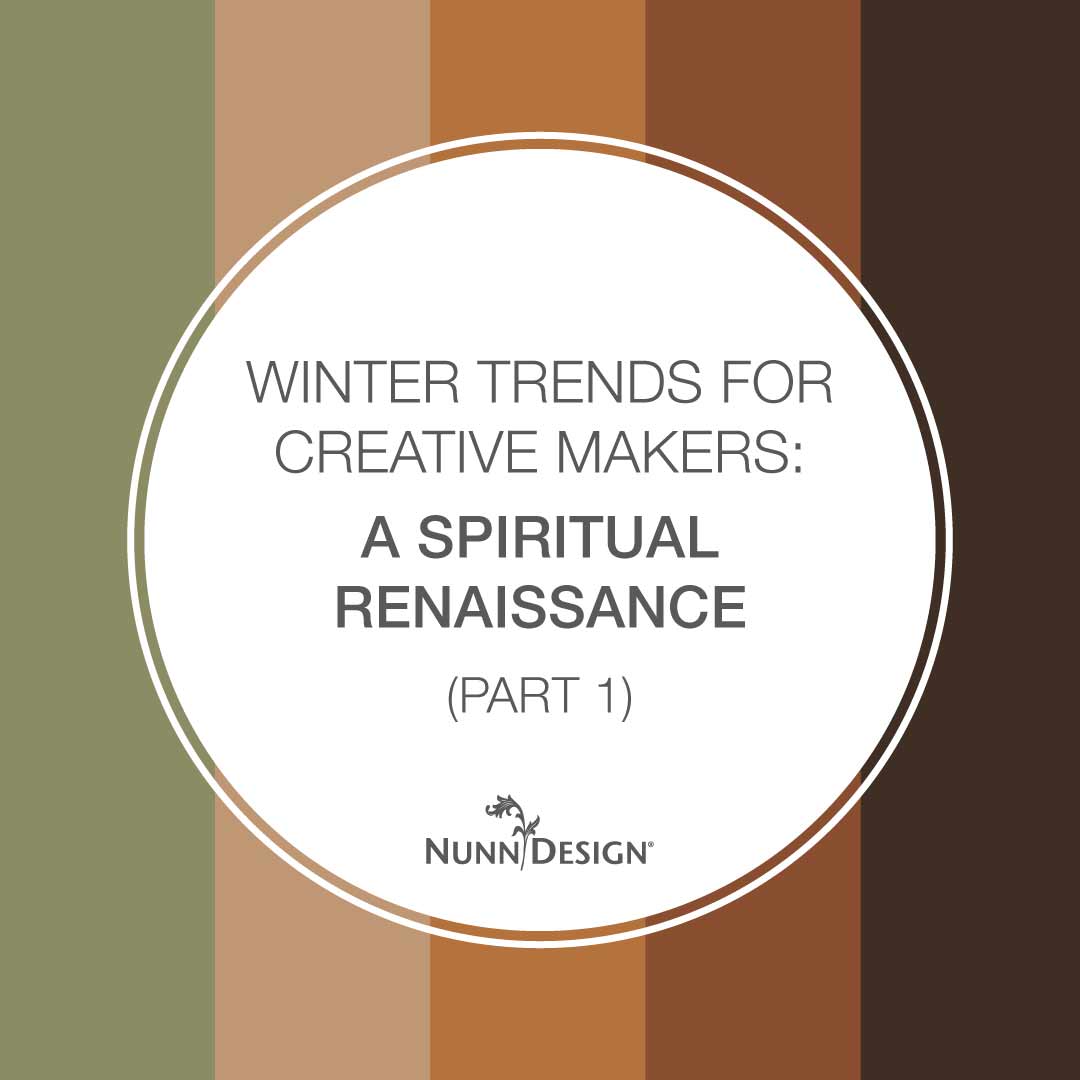
I recently engaged in a conversation with Tammy Honaman, an industry educator in the handcrafted jewelry industry. Tammy reached out to ask about the trends I was seeing within our industry.
This post features our conversation. I hope you will take the time to read it. It will give you a glimpse into who I am as an artist and the thought that goes into creating a product line that inspires creativity.
I can’t thank you enough for following your creative path and including Nunn Design on your journey.
Becky
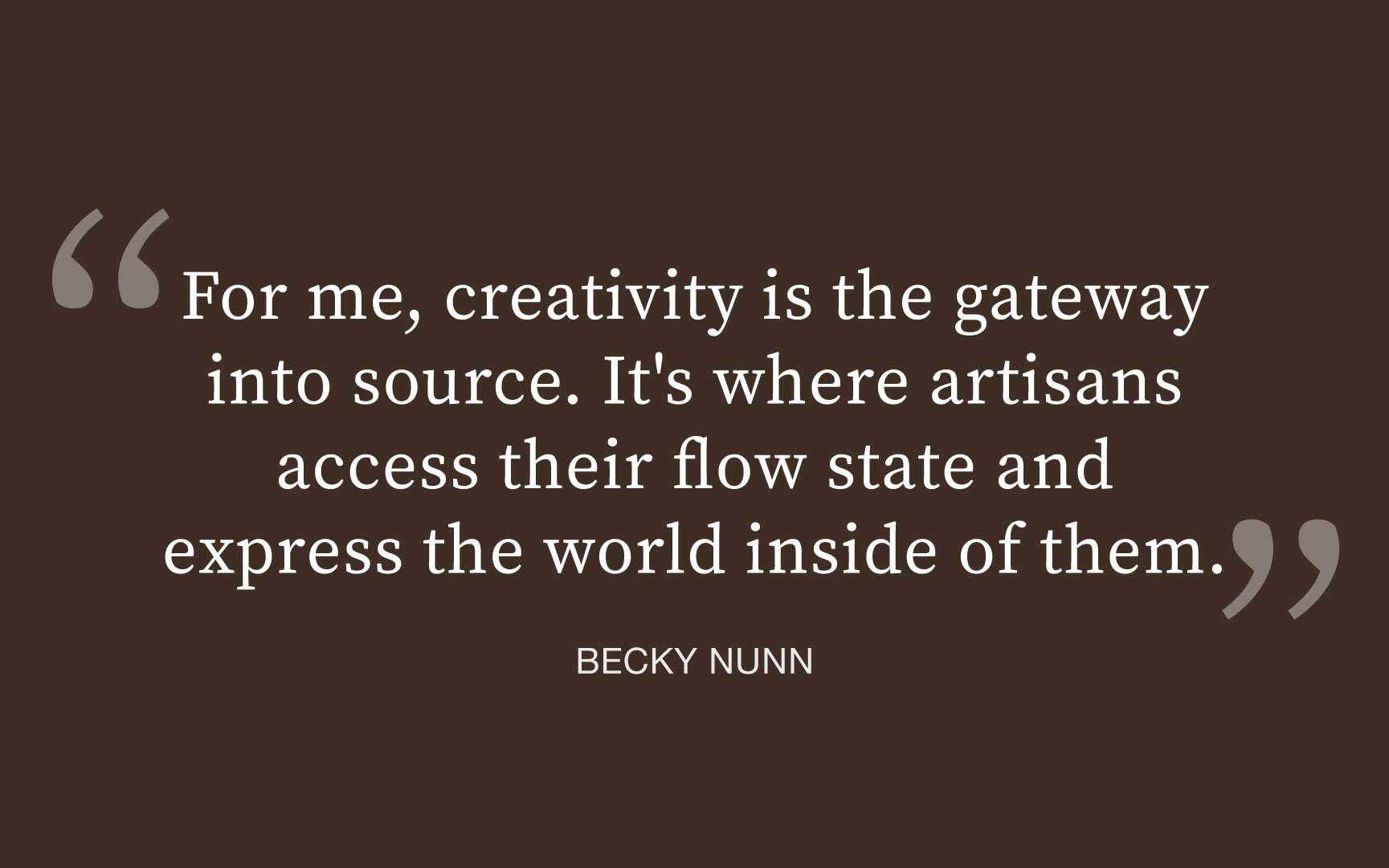
Becky: Thank you, Tammy, for such a great question.
The topic you asked about aligns perfectly with what I do within our company.
For those who may not know, Nunn Design has been in the business of creating jewelry findings in the United States for over 20 years. Our company’s mission is: Through collaborative relationships, Nunn Design inspires and nurtures creativity.
As a working artist developing products, forecasting trends, teaching, and running a creative company, creativity has always been my gateway to source. For me, there is an energetic process that happens when I’m creating. I’ve always been curious about what that energy is exactly. Many artisans I speak with refer to it as “the flow state.”
Tammy: I definitely know what you’re talking about. It’s something that comes up often for artists as they embrace what truly fuels their passion and when they feel the best about what they’re creating.
Becky: My curiosity about this topic fuels much of what I do. I think and write about it within our community of Creatives. I also back it with hard data—what I see within our business, insights we track through sales, our customers’ needs, and by examining what’s happening in the world.
Have you heard or studied much of Joseph Campbell’s work?
Tammy: I’m a little familiar with his work through the Power of Myth series with Bill Moyers on PBS.
Becky: In that series with Bill Moyers, Campbell explores world traditions, rituals, and mythology throughout history. Campbell says it has been artisans who are the shamans of culture. They enter into their interior world and bring forth stories of their experiences through their own individualized expression.
Whether we are conscious of it or not, the myth of what our culture is experiencing is still being expressed. So, what I want to talk to you about is what I’m seeing happening within the culture and what we’re experiencing at this time in history. Spoiler alert: I see it as really, really positive.
Tammy: We love that positivity! We need it. So, thank you, Becky. Thank you.
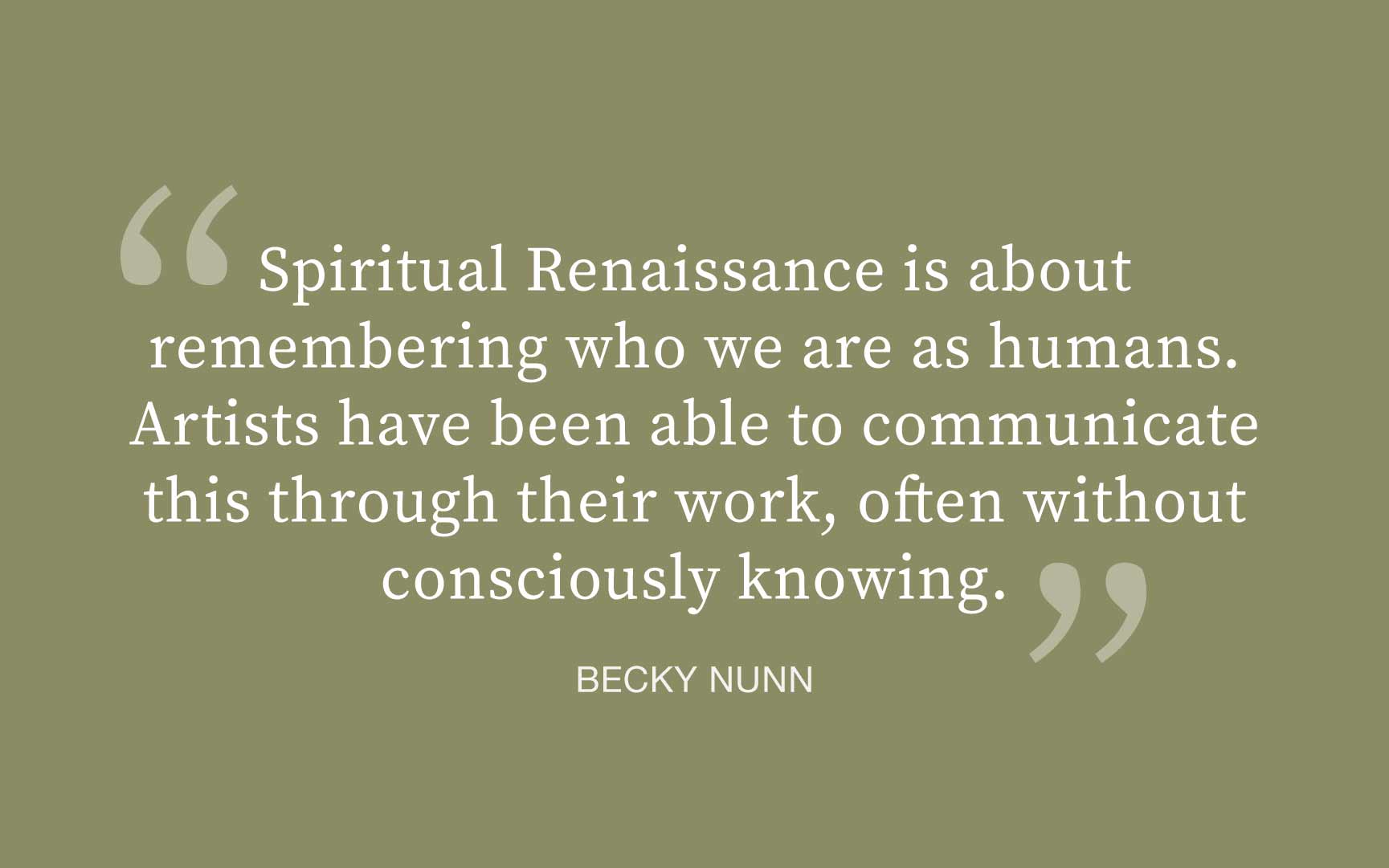
Becky: That doesn’t mean there aren’t polarities—positive and negative, light and dark—because it all has to happen. You can’t have yin without yang, light without dark, good without evil. I think many artisans are able to absorb these contrasts and find a place within themselves to make sense of it. They then bring it back out into the world as an expression of art, whether through music, painting, jewelry making, or other creative venues. This is the role of artists within the culture.
Earlier this year, I reflected on this topic and wrote a couple of blog posts on the number one trend I saw tracking across many forms of creativity—Spiritual Renaissance. When I first noticed this in January, I didn’t know exactly what I was seeing, but I instinctively knew it was there and that it was a growing trend.
During COVID, innovation halted due to supply chain issues. I had so little to track, so I thought, “Okay, maybe we’re beyond materialism. Maybe we’re beyond consumerism.” I began tracking trends wherever I could find them—articles, TV and movies, world politics.
Over and over, I began to see a pattern towards spirituality. Some might say this is personal bias, and to be honest, I wouldn’t disagree. Spirituality isn’t about religion; it’s beyond that. I think artisans intuitively understand this because when they’re in a creative flow state, they access it. That’s spirituality. I think we, as humans, are being called to go beyond religion and rethink it.
I started asking myself: When has humanity experienced a Renaissance before? Was it during the 15th Century in Italy? To understand what led up to that era, I studied the history and mythology of ancient Egypt and Greece.
In that research, I came across a podcast series by Dr. John Vervaeke, a professor of philosophy and psychology at the University of Toronto in Canada. During COVID, Dr. Vervaeke posted a 50-part series of lectures called Awakening from the Meaning Crisis. Through his work, I gained a new understanding of how many historical dots connect. Starting with the ancient Greek philosophers and moving forward through history, John painted a picture of how the human psyche developed.
I also spent a lot of time trying to understand what humanity was listening to, watching, and drawn to. For example, The Chosen, a TV series about the early teachings of Jesus, was breaking viewership records, so I studied ancient Christianity and Jesus’ early life and teachings. As I delved into Christianity, I became curious about governmental powers and their influence on the early church. I then turned east to study yoga and meditation trends, exploring parallels in Eastern traditions like Buddhism and Taoism. It didn’t take long to see the same core beliefs, just expressed through different rituals.
For me, Spiritual Renaissance is about remembering who we are as humans. As I mentioned earlier, throughout history, artists have been able to communicate this through their work, often without consciously knowing.
Tammy: Thank you. You convey the message so well and in such a concise manner. I love how you correlate it all together and translate good and evil into a way that’s easy to digest and comprehend.
Do you think some of your ability and the time you’ve taken to do this deep thinking is due to entering a particular phase in your life? I feel like some of these topics are introduced when we’re in junior high, but we aren’t ready to process them or correlate them to deeper meanings. Or do you think this is just who you are?
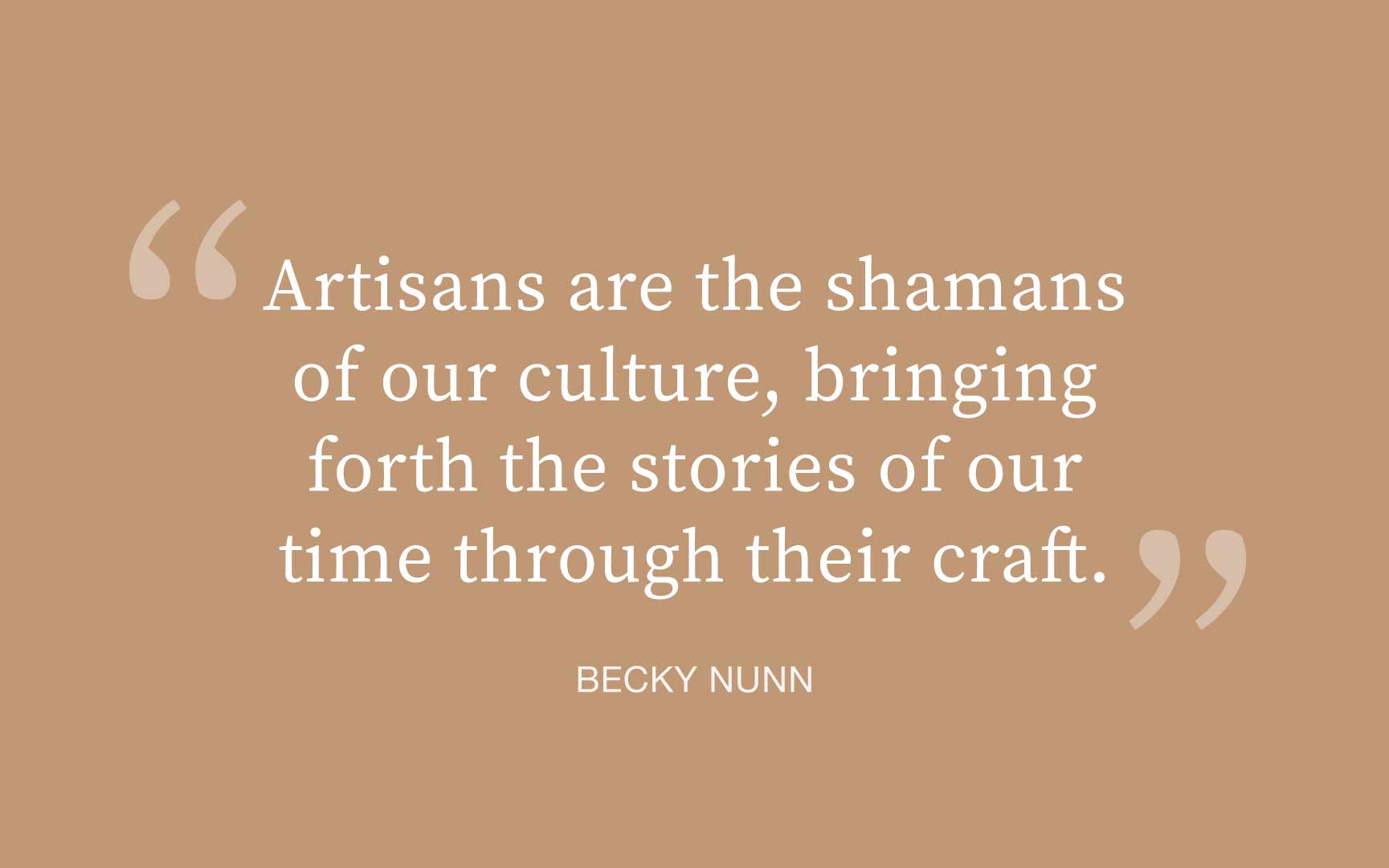
Becky: I think it’s several factors—the phase of my life, where we are as humans on this amazing planet, and who I am due to my own life experiences and circumstances.
Firstly, I’m at a phase in my life where I’m ready to address the world beyond my own needs. My husband and I had our children much later in life. I’m now launching my youngest, and soon, we’ll be empty nesters.
When COVID hit, I had the time to restructure the business and simplify things. I realized we were all moving too fast. COVID provided a necessary pause to rebuild our company and focus on the essentials. I thought I had done this work and that we were lean, but boy-howdy, there was so much more to do. Every rock was turned over, every system examined and simplified. That simplification allowed me to turn my attention to other topics, like the trends we’re discussing.
The second factor is where we are with technology and how quickly we can share ideas through Instagram and other social media platforms. Humanity is merging, and that’s beautiful—though there are shadow aspects of that too.
Thirdly, I think my early childhood trauma plays a role. It took a lot of therapy throughout my life to understand how family trauma, both immediate and ancestral, affected me. It took inner searching and timeline building to see how my trauma shaped my beliefs and thought patterns. Again, there are positives and negatives to everything. Revisiting those early memories helped me heal and see patterns. That’s how I knew to do this work with humanity—because I had done it within myself.
I’m the eighth of nine kids. I had a lot of siblings to ask, “What was going on within the family system when I was born?” I was lucky to have so many to call on for clues.
Tammy: That’s a lot to think through—something we could all work on.
Becky: Yes, but I believe that if one person does the work, they can help heal others.
Tammy: Amazing. Thank you for sharing and inspiring us with ideas on what to do and how to do it.
Becky: All of this leads to what I call “The State of Our Union”—what I see artists working on, reflecting on, and expressing through their art.
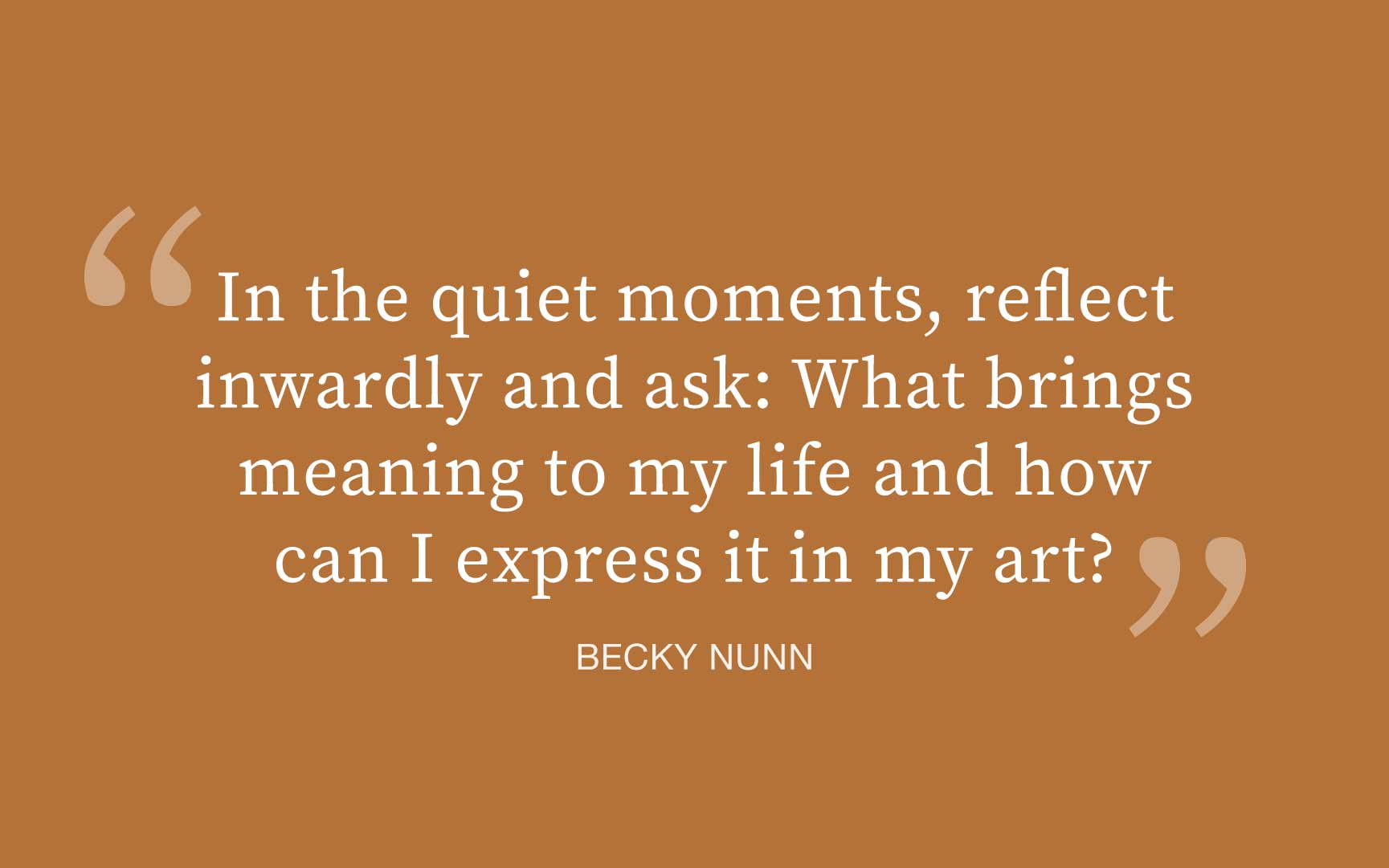
1. What Brings Us Meaning
We, as artisans and creators, bring forth the myth of our time. It’s important to be still and reflect inwardly on what brings meaning to our personal lives.
Much of the meaning that drives me today stems from my childhood trauma. As a young adult, my mother told me, “You aren’t creative or talented in the arts, like your sisters.” I am so grateful for that statement now, as it was the alchemy I needed to turn lead into gold. I built a whole business supporting others in believing they are more creative than they ever imagined. It created a fire in my belly that fueled our company’s mission.
For others, meaning might come from a deeper understanding of their faith and spirituality, energy healing, astrology, meditation, yoga, or exploring the world through nature.
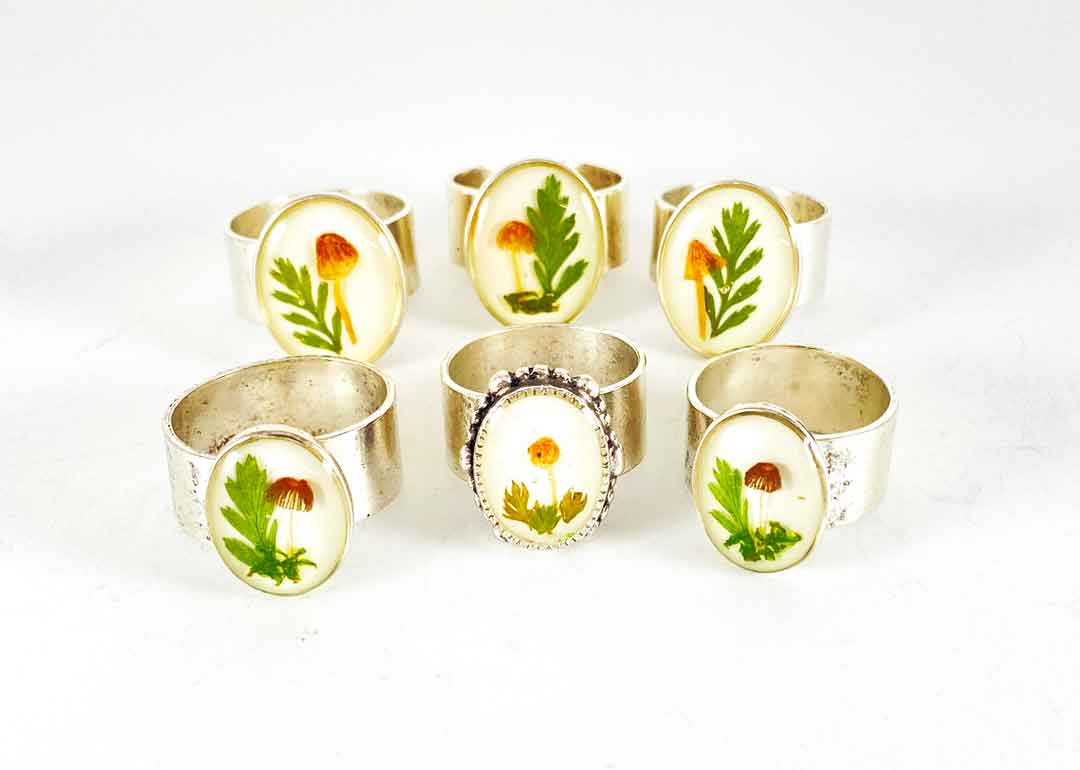
Gloria, a long-time customer of Nunn Design, is a dedicated observer of the natural world. At a recent record-breaking sales show, she reflected on the customers’ responses to her jewelry:
“I’ve never seen anything like these before!”
“They’re so beautiful!”
“Where do you find such tiny mushrooms? Are they real?”
“How long have you been doing this?”
Because of Gloria’s love for nature, she inspires others to see the beauty she does. This brings meaning to her life, as well as to those who purchase her jewelry and wear her creations.
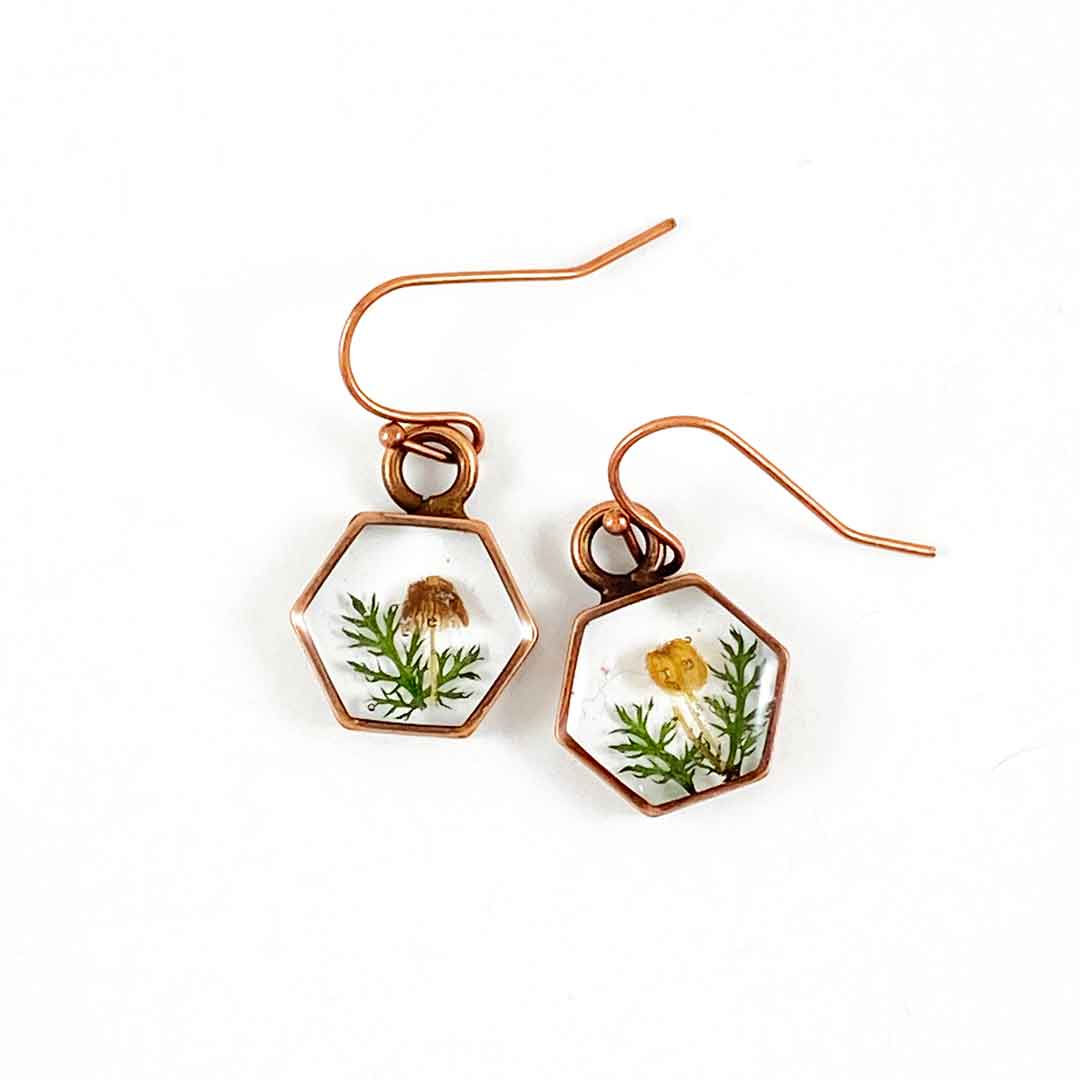
Read Gloria’s full story here: Gloria’s Artisan Feature
A question that all of us could explore within ourselves is; what brings our lives meaning, and how can we bring that forth in our lives and through our art.
2. Tell Your Unique Story
Entire online summits and courses are being conducted to help people get in touch with their unique stories. Many stories are born from significant trauma in an individual’s life—like my own childhood experience of being told I wasn’t creative.
What I love about this powerful trend is that we’re encouraging each other to be transparent and vulnerable in an authentic way. By allowing ourselves to be seen, we encourage others to do the same.
In our technology-driven society, our stories as artisans can make a real difference in people’s lives.
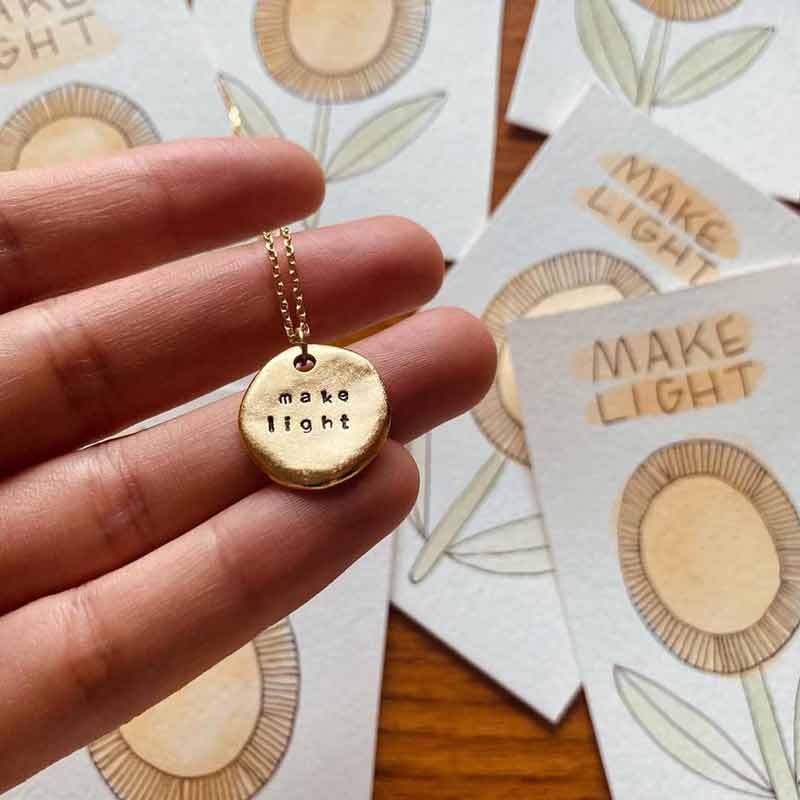
Reena started kisii to fundraise for causes she believes in, particularly tumor research. After being diagnosed with a rare tumor in 2010, she underwent surgery, radiation, and has been undergoing chemotherapy on and off ever since. She’s tried traditional cancer treatments, participated in clinical trials, and explored alternative modalities like Ayurvedic medicine and acupuncture. “I began making jewelry as a creative outlet and to practice mindfulness through making. My road to healing has been a long journey, but I’ve learned to keep looking forward.”
Read Reena’s full story here: Reena’s Artisan Feature
What is your unique story that has brought you to where you are today? How can you use that story to connect deeply with others, building brand loyalty and intimacy with other humans?
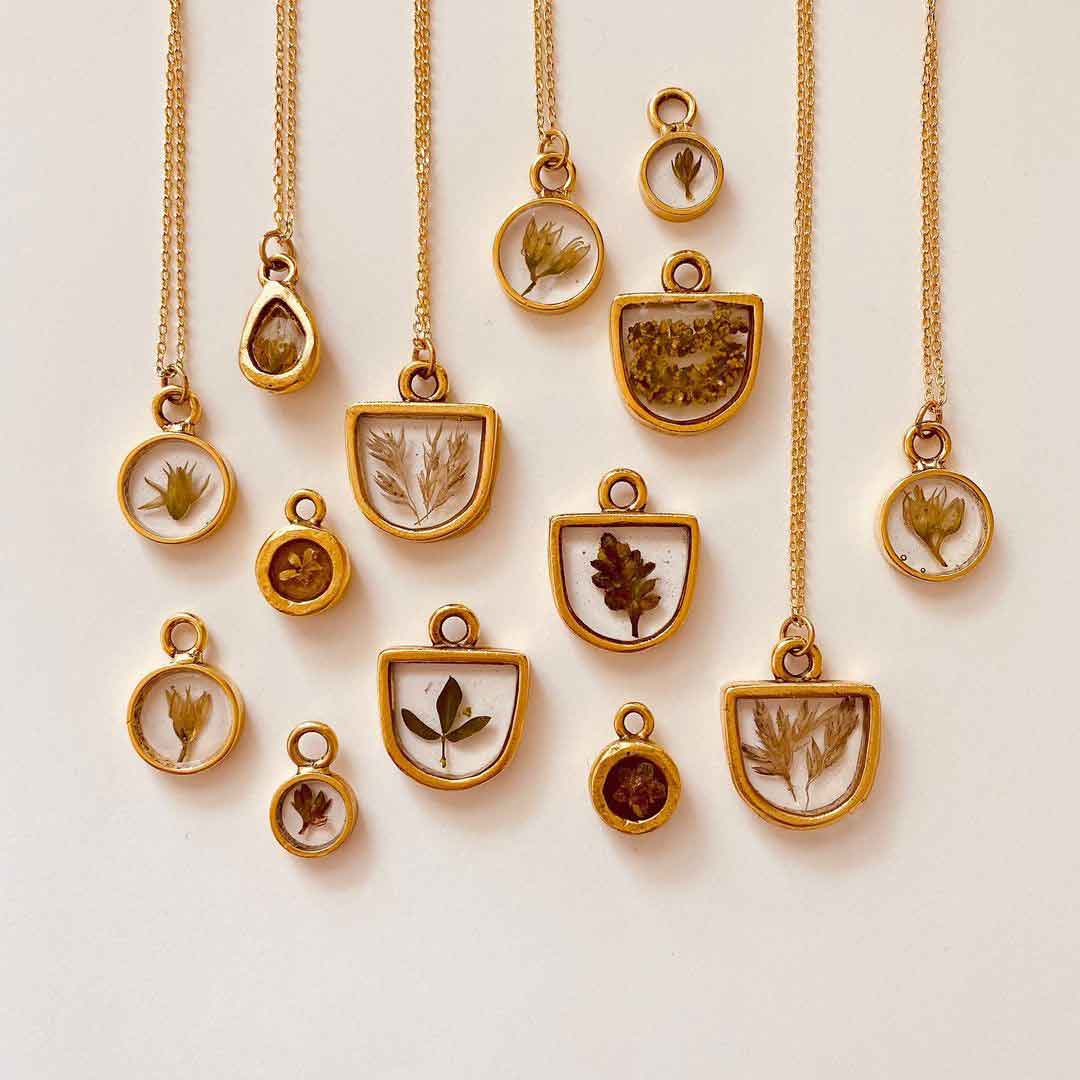
Please join me next week for Part 2 of “Winter Trends for Creative Makers: A Spiritual Renaissance.”
Resources Mentioned:
Shop Nunn Design Wholesale
Nunn Design has been supplying jewelry artists with findings for over 20 years. Shop wholesale jewelry findings for creative jewelry makers.
Shop Nunn Design!
How to Purchase Wholesale?
If you are interested in becoming one of the many designers who trust their jewelry to Nunn Design Findings, please join us by registering to become one of our wholesale customers!
Please visit our Where to Buy Page for a listing of online stores that sell Nunn Design Findings retail.

If you enjoyed reading this post,
please subscribe to our blog.
Here are 10 Reasons Why to Subscribe
and a place to do so!
